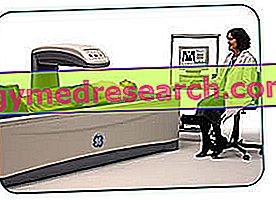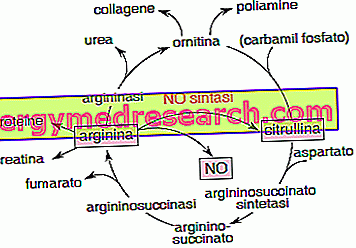Densitometry and Osteoporosis
Bone densitometry is a diagnostic technique that allows the evaluation of bone mineral density, being particularly useful in the diagnosis and monitoring of osteoporosis.
This skeletal disease is characterized by the reduction of the mineral content of the bones and by the deterioration of the microstructure that characterizes them; as such, it exposes patients to an important risk of suffering fractures even for minor traumas. In general, this risk is greater the lower the bone mass; for this reason densitometry is currently considered the gold standard for instrumental diagnosis of osteoporosis and an important "predictor" of fracture risk.
How does it work

Among the different types of instrumentation available, DEXA is currently the most used.
Execution and Preparation
The time required for the investigation is about 10 minutes, it is not in any way painful and there is no need for special dietary or pharmacological preparations. At the end of the procedure the patient can then resume normal occupations normally.
The only care is to postpone the densitometry for a few days if recently subjected to a scintigraphic or radiological examination with baryta contrast agent (the evaluation is the responsibility of the nuclear medicine specialist). Furthermore, before the examination, metal parts such as coins, buckles, watches, bracelets and the like will be removed from the exploration field.
Examined locations
The skeletal segments studied by bone densitometry vary in relation to the characteristics of the patient; in general the lumbar spine is evaluated in younger women (<65 years) and in the femoral neck in the older ones and / or with rachis pathologies. Sometimes, the examination can be conducted on both segments or at the level of the radium (forearm).
Bone densitometry allows us to find out if a person is affected by osteoporosis and to establish the severity level; it can also quantify the future risk of developing the disease and help assess the effectiveness of the therapies undertaken.
Indications
Who has to undergo bone densitometry?
The densitometric survey is particularly indicated in the presence of important risk factors for osteoporosis, which result in the following clinical conditions:
- women aged> 65 and menopausal for at least a decade (some guidelines recommend bone densitometry also for men over 70);
- early menopause (<45 years);
- surgical menopause (removal of the ovaries during the fertile period);
- various causes of estrogen deficiency (primary hypogonadism or secondary amenorrhea lasting more than a year);
- constitutional factors that predispose to osteoporosis (pre and post-menopausal women with body mass index <19 kg / m², long-limbed, sedentary with reduced muscle mass);
- major dietary deficiencies (inadequate intake of calcium and vitamin D);
- symptoms that suggest the presence of osteoporosis: decrease in height greater than 3 cm, curvature of the spine or fracture caused by a slight accident;
- recent or future submission to prolonged treatment with cortisone at high doses or other osteopenizing drugs (for example antiepileptics, methotrexate, immunosuppressive therapies after organ transplantation);
- previous fractures not due to significant traumas;
- diseases that promote bone demineralization (hypercortisolism - Cushing's syndrome, hyperthyroidism, kidney failure, hyperparathyroidism);
- strongly positive familiarity for osteoporosis;
- more than 20 cigarettes a day, alcohol abuse.
In the presence of one or more of these risk factors, it is important to consult your doctor to evaluate whether or not to undergo bone densitometry.
Results
The diagnosis of osteoporosis is based on the comparison of the densitometric result with
- the average age of healthy adults of the same sex and aged 25-30 years (then examined when they reach the peak of bone mass - T-score);
- and / or the average age of subjects of the same age and sex (Z-score).
According to the WHO, the diagnosis of osteoporosis should be made, limited to the DEXA technique, considering the densitometric values, expressed in T-score according to the following scheme:
| T-SCORE | BONE HEALTH |
| > -1 | NORMAL |
| <-1 and> -2.5 | osteopenia |
| <-2.5 | OSTEOPOROSIS |
| <-2.5 with fracture | SEVERE OSTEOPOROSIS |
NOTE: a T-score equal to 0 indicates that the subject examined has a bone density equal to the average of young people; a T-score equal to or greater than -1 is still considered normal. In the presence of a T-score between -1 and -2.5 the subject has a reduced bone density, not so severe as to speak of osteoporosis but still sufficient to induce him, together with his doctor, to set up an effective treatment to prevent further bone demineralization. Finally, a T-score at or below -2.5 indicates the presence of osteoporosis and the need for appropriate medical care; once the treatment has been undertaken, the doctor can assess its effectiveness by subjecting the patient to periodic bone densitometries.



